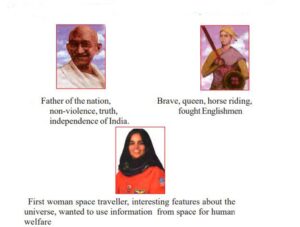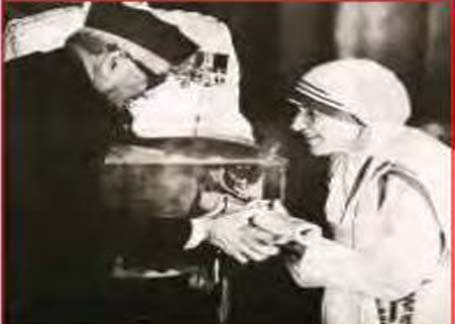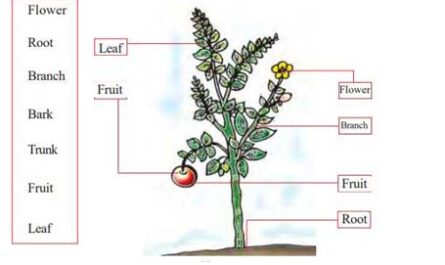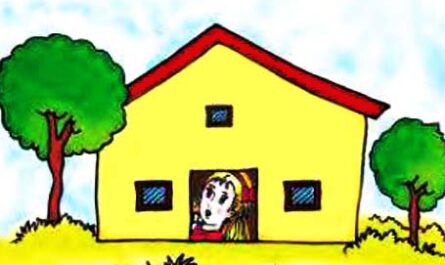1 A.) Answer the following questions.
1.) How did the charity home celebrate Christmas every year?
Ans – The charity home used to arrange Christmas party every year for the children.
2. What did the man hand over to the Mother?
Answer – The man handed over an envelope to the Mother which had new hundred rupee notes in it.
3. What does it mean by “when the door-bell did not ring.”?
Answer – The term “When the door-bell did not ring” means that they did not get any help or support from anyone.
4. What did the admirer say?
Answer – The admirer said that Mother Teresa had no idea where the money would come from. But if a project was needed she would go ahead.
5. What is ‘Nirmal Hriday’?
Answer – Nirmal Hriday is a shelter for those who are seriously ill and unacceptable elsewhere. These people are washed, fed and sheltered in this home.
6. What did Mother do on the streets of Kolkata?
Answer – Mother collected children on the streets of Kolkata to teach them hygiene.
7. How was the ‘Missionaries of Charity’ formed?
Answer – Mother was looking for a centre for her work. When a family offered her rooms in their house, she appointed about 26 assistants and the ‘Missionaries of Charity’ was formed.
8. Find out words that describe Mother’s simplicity?
Answer – “She lived a simple life, travelled by second-class on train, got down on hands and knees to scrub floors. She cherished simplicity and wore a shawl more darned than knitted”. These words describe her simplicity.
9. What did she want the people to know about the poor?
Answer – She wanted the people to know about of the greatness of the poor.
10. What was Mother Teresa’s real wealth?
Answer – Mother Teresa’s real wealth was Himalayan in size- 60 schools, 213 dispensaries, victims of leprosy in 54 clinics; orphaned children in 20 homes and destitute or dying people in 23 homes, all these in 35 cities and towns in India and in a dozen other countries.
11. How do people remember Mother Teresa?
Answer – People remember Mother Teresa for life-long commitment to the poor that excels all barriers.
B Write True or False for each of the sentences given below
a. The children of charity-home used to enjoy Christmas party every year. (True)
b. The envelope contained new thousand (1000) rupee notes. (False)
c. Many times the inmates of the charity home had no Christmas party. (False)
d. Mother knew from where the money would come for a project. (True)
e. The municipal authorities refused to provide her a place for the poor. (False)
f. Most of the members of ‘The Missionaries of Charity’ are Indians. (True)
g. Mother Teresa knew the greatness of the poor. (True)
Vocabulary
1. Form sentences using the following words –
crisis, project, dignity, hygiene, starving, property, hungry
(i) Crisis – We should be strong enough to face any crisis.
(ii) Project –The teacher gave projects to the students to help them learn better.
(iii) Dignity – We should always maintain our dignity.
(iv) Hygiene – Hygiene is the key to avoid many diseases.
(v) Starving – Ravi was starving as he got lost in the jungle.
(vi) Property – The rich people have big properties.
(vii)Hungry – The children are feeling hungry.
Grammar:
Rewrite following sentences as given in the example.
1. Mother Teresa said, “ I believe we need the poor as much as they need us.”
Ans. Mother Teresa said that she believed they need the poor as much as they needed them.
2 She said. “they are just as hungry as we are.”
Ans. She said that they were just as hungry as we were.
3 An admirer said, “she has no idea where the money will come from.”
Ans. An admirer said that she had no idea where the money would come from.
4. Sister Franklin said. “This is a real sacrifice.”
Sister Franklin said that it was a real sacrifice.
5 Mother replied, “I love the people of Kolkata”
Mother replied that she loved the people of Kolkata.
Activity
A Listen to the passage and fill in the following information about Mother Teresa.
1. Early Life and Background:
Mother Teresa, born Anjezë Gonxhe Bojaxhiu on August 26, 1910, in Skopje, North Macedonia, held Albanian descent and later became an Indian citizen.
2. Early Career and Divine Calling:
Initially a teacher and later a school principal in Kolkata, India, Mother Teresa experienced a divine calling in 1946, leading her to leave the convent and establish the Missionaries of Charity in 1950.
3. National Recognition and Awards:
Mother Teresa’s compassionate work earned her national recognition, including the Padma Shri in 1962 and the Bharat Ratna in 1980, both prestigious Indian civilian awards.
4.International Acclaim:
In 1979, Mother Teresa was honored with the Nobel Peace Prize for her global impact on poverty and distress, which were seen as threats to peace.
5. Founding Missionaries of Charity:
Mother Teresa’s dedication extended beyond India, with the establishment of Missionaries of Charity foundations in various countries, including the United States, Venezuela, Italy, and Bangladesh.
6. Legacy and Continued Impact:
Mother Teresa’s legacy endures through the continued work of the Missionaries of Charity and the global recognition of her extraordinary contributions to the welfare of the less fortunate. Her influence inspires individuals worldwide to dedicate their lives to serving humanity.
B Look at the pictures of the great persons and say a few sentences about them.

Mahatma Gandhi:-
Mahatma Gandhi, India’s “Father of the Nation,” led the country to independence using two powerful ideas: non-violence and truth. Instead of fighting with weapons, he believed in peaceful protests to bring about change. His famous words, “Be the change you want to see in the world,” encouraged people to make a difference through kindness and honesty. Gandhi’s teachings inspire people all over the world to stand up for what is right without using violence.
Jhansi Rani Laxmi Bai
Rani Lakshmibai, the brave queen of Jhansi, was a fearless leader who rode into history on the back of a horse, embodying courage and determination. Known for her indomitable spirit, she fearlessly fought against Englishmen during the Indian Rebellion of 1857. Rani Lakshmibai’s legacy is one of valiant resistance, symbolizing the strength of women in the face of adversity as she stood up for her kingdom and its people. Her daring exploits on the battlefield and her commitment to defending her land have made her a symbol of inspiration and heroism in Indian history.
Kalpana Chawala:
Kalpana Chawla made history as the first woman space traveler of Indian origin, soaring into the cosmos with a passion for unraveling the mysteries of the universe. Her journey aboard the Space Shuttle Columbia in 1997 marked a significant achievement. Kalpana, an accomplished astronaut and aerospace engineer, was captivated by the fascinating features of space and its potential benefits for humanity. She aimed to utilize information gathered from space exploration for the betterment of human welfare, showcasing a vision that extended beyond the stars to the improvement of life on Earth. Kalpana Chawla’s legacy continues to inspire aspiring scientists and astronauts to reach for the stars while keeping a steadfast commitment to the well-being of our planet.
Click on the links below to find other chapters.
1 Hobble- Bobble
2 The Missing Whistle
3 Hand Care
4 Hard to Believe
5 Alice in Wonderland-II
6 Unity is Strength
7 Jimmy Jet and His TV Set
8 A Serious Talk
9 Have a Cup of Nice Tea
10 Our Little River
11 Grand Children By Suprise
12 The Chinese-Our Neighbour
13 Only God can make a tree
14 The Angel of Peace
15 Halfway Down
16 Making Best Out of Waste, Her Forte
17 Dear Diary
18 From Tomorrow on
19 Unfriendly Nature
20 The Glorious Whatwasher
21 The Great Sculler




